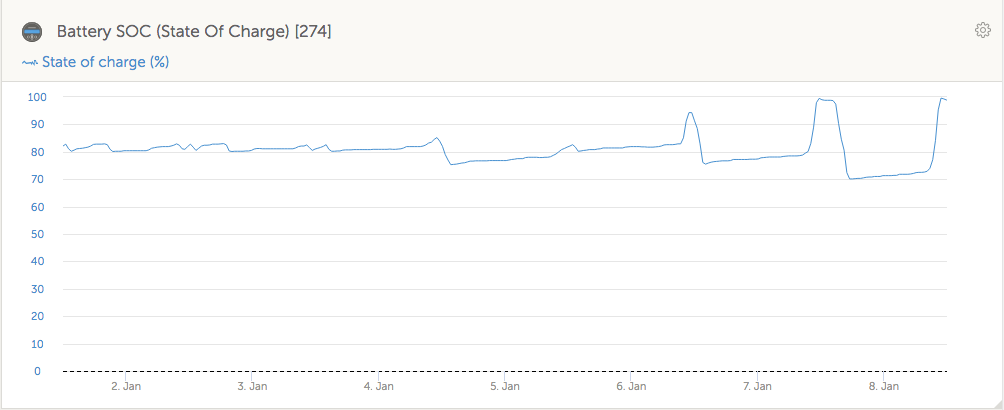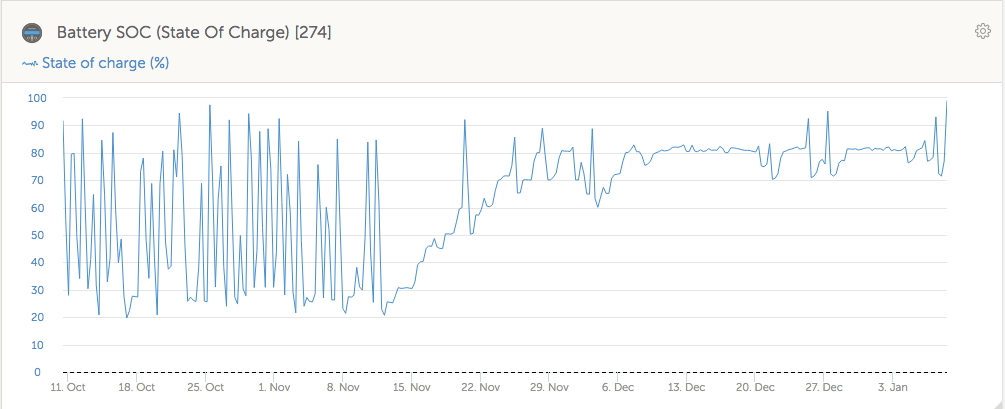Hi,
I have a Multiplus II with Pylontech batteries (1 x US2000 and 1 x US3000) and MPPT with solar
I am struggling to find out which mode should be used. It is currently configured with BatteryLife but I have seen some users saying it should be configured without BatteryLife?
Can anyone confirm which option should be used?

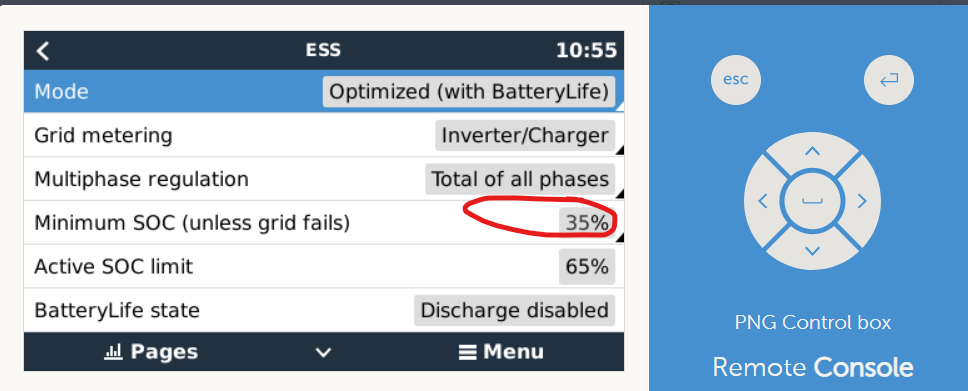
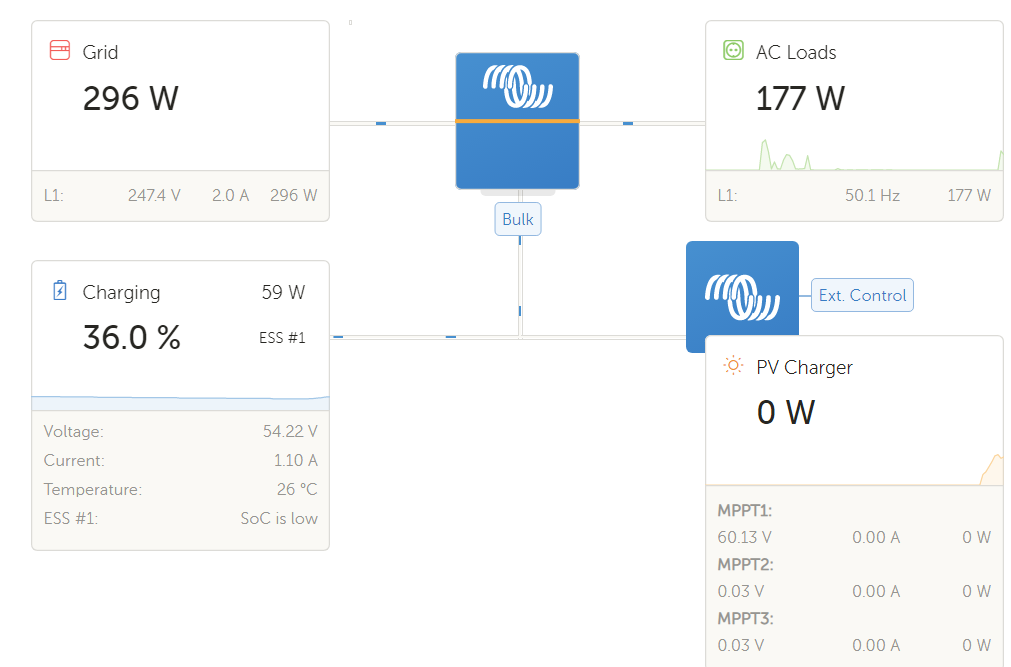
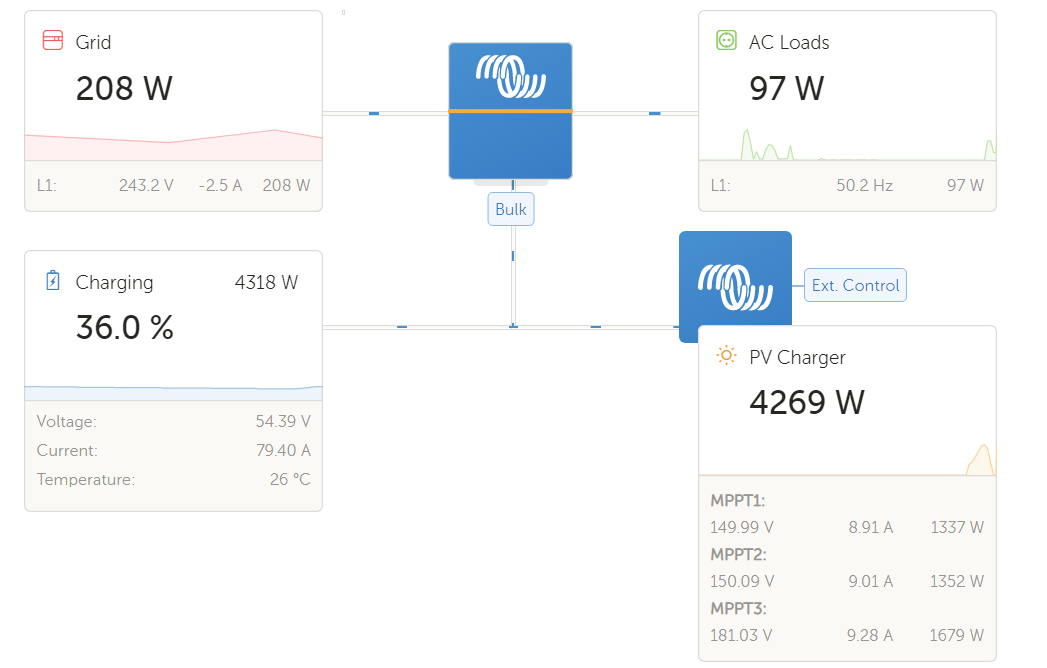 in case of mmpt (PV power ) available ,still you can see grid is trying to go bulk and also supplying loads , shouldnt now it be off and go standby? already there is surplus pv power available , whats going wrong here?
in case of mmpt (PV power ) available ,still you can see grid is trying to go bulk and also supplying loads , shouldnt now it be off and go standby? already there is surplus pv power available , whats going wrong here?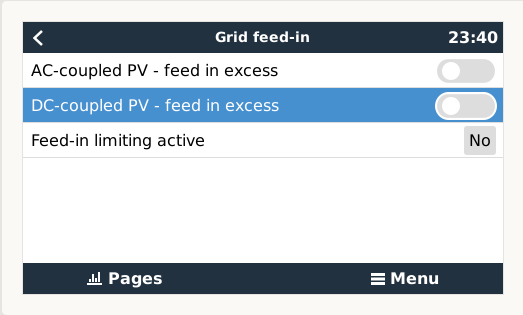
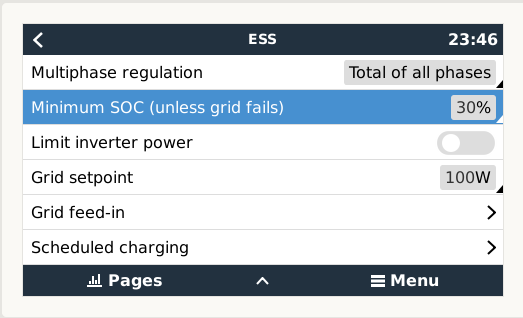 Because you have only MPPT chargers they will be used only for loads and battery charging.
Because you have only MPPT chargers they will be used only for loads and battery charging.